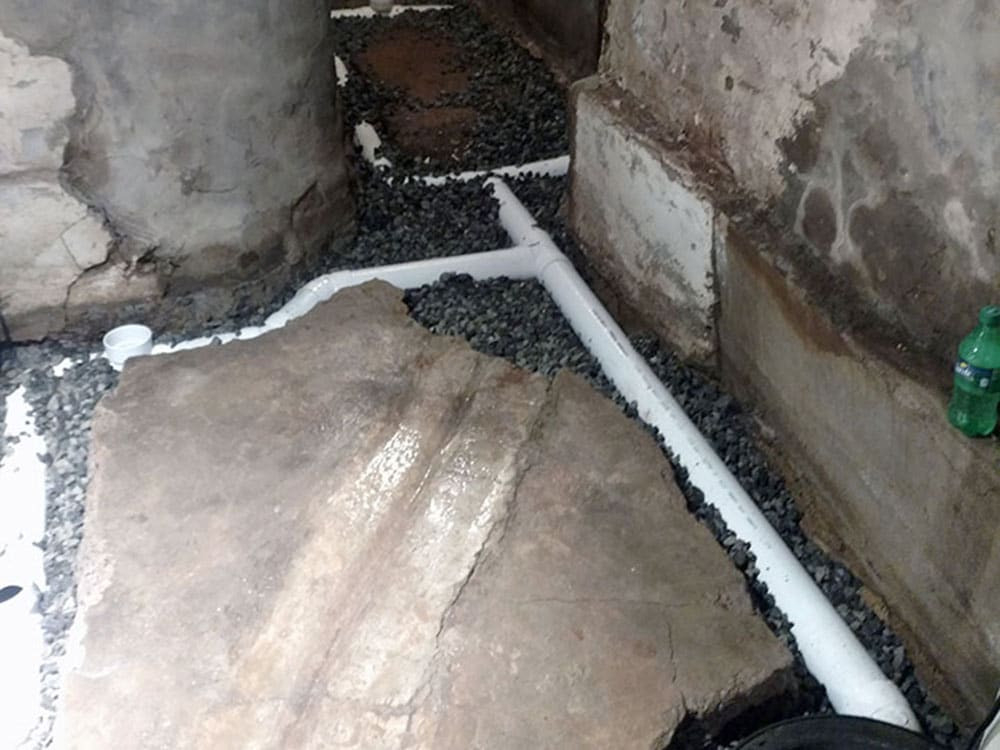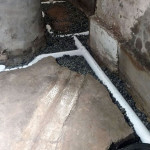Basement waterproofing is a critical aspect of home maintenance, ensuring a dry and healthy living environment. Water intrusion in basements can lead to structural damage, mold growth, and poor indoor air quality. This comprehensive guide explores the causes of basement water problems, effective waterproofing methods, and maintenance tips to keep your basement dry and safe.
Understanding Basement Water Problems
Causes of Basement Water Problems
- Hydrostatic Pressure
- Water accumulation around the foundation creates hydrostatic pressure, forcing water through cracks and porous areas in the basement walls and floor.
- Poor Drainage
- Improper grading, clogged gutters, and downspouts can direct water toward the foundation, increasing the risk of water seepage.
- Foundation Cracks
- Cracks in the foundation can develop due to settling, temperature changes, or soil movement, providing a pathway for water intrusion.
- Leaking Window Wells
- Ineffective seals or poor design of window wells can allow water to seep into the basement through basement windows.
- Sump Pump Failure
- A malfunctioning sump pump can result in water accumulation during heavy rains or flooding.
Types of Basement Waterproofing
1. Interior Waterproofing
- Sealants and Coatings
- Interior sealants are applied to basement walls and floors to prevent moisture from seeping through. While these are not long-term solutions for active leaks, they can be useful as an additional layer of protection.
- Interior Drainage Systems
- Interior drainage systems, such as French drains or weeping tiles, are installed inside the basement perimeter to redirect water to a sump pump.
2. Exterior Waterproofing
- Exterior Excavation
- Excavation around the foundation allows for the application of waterproof membranes and drainage systems, effectively keeping water away from the foundation.
- Membranes and Sealants
- Bituminous or polyurethane membranes are applied to the exterior foundation walls to create a waterproof barrier.
- Exterior Drainage Systems
- Properly installed exterior drainage systems, including gutters, downspouts, and French drains, direct water away from the foundation.
Steps to Waterproof Your Basement
1. Identify the Source of Water
- Inspect Your Basement
- Conduct a thorough inspection of your basement to identify the source of water intrusion. Look for cracks, mold, mildew, and damp spots.
- Check Grading and Drainage
- Ensure the ground slopes away from the foundation. Clean and extend downspouts to direct water away from the house.
2. Seal Cracks and Joints
- Epoxy or Polyurethane Injections
- Use epoxy or polyurethane injections to seal foundation cracks. Apply waterproof coatings to walls and floors for additional protection.
3. Install a Sump Pump
- Sump Pump System
- A reliable sump pump with a battery backup system is essential for handling excess water during heavy rains or floods. Install the sump pump in the lowest part of the basement.
4. Consider Exterior Waterproofing
- Exterior Excavation
- For severe water problems, exterior excavation and waterproofing may be necessary. Consult with a professional to determine the best approach.
5. Interior Drainage Systems
- French Drains
- Install French drains along the interior perimeter of the basement to collect and redirect water to the sump pump.
- Weeping Tiles
- Weeping tiles are another effective interior drainage solution, collecting water from the foundation walls and directing it to the sump pump.
DIY vs. Professional Waterproofing
When to Hire a Professional
- Extensive Water Problems
- If you have severe water intrusion or significant structural damage, it’s best to hire a professional waterproofing contractor.
- Foundation Repairs
- Foundation repairs, such as crack sealing and structural reinforcement, should be handled by professionals to ensure long-term effectiveness.
- Exterior Excavation
- Exterior waterproofing involves excavation around the foundation, which is best left to professionals with the necessary equipment and expertise.
Choosing a Professional Waterproofing Contractor
- Research and Referrals
- Read reviews and ask for referrals from friends, family, or neighbors who have had waterproofing work done.
- Credentials and Experience
- Ensure the contractor is licensed, insured, and has extensive experience in basement waterproofing.
- Inspection and Estimate
- A reputable contractor will conduct a thorough inspection and provide a detailed estimate of the waterproofing process.
- Warranty and Follow-up
- Ensure the contractor offers a warranty on their work and provides follow-up inspections and maintenance advice.
Maintenance Tips for a Dry Basement
1. Regular Inspections
- Periodic Checks
- Regularly inspect your basement for signs of water intrusion, such as damp spots, mold, and mildew. Early detection can prevent more significant issues.
2. Maintain Gutters and Downspouts
- Clean Regularly
- Clean gutters and downspouts regularly to ensure proper water flow away from the foundation. Repair any leaks or damage promptly.
3. Check Sump Pump Functionality
- Test Periodically
- Test your sump pump periodically to ensure it is working correctly. Consider installing a battery backup system for power outages.
4. Control Indoor Humidity
- Use Dehumidifiers
- Use dehumidifiers to keep indoor humidity levels in check, preventing mold growth and maintaining air quality.
5. Landscape Maintenance
- Proper Grading
- Ensure the landscape around your home is well-maintained and properly graded to direct water away from the foundation.
Basement waterproofing is a vital aspect of home maintenance that can protect your investment and health. By understanding the causes of water intrusion and implementing effective waterproofing techniques, you can ensure a dry and healthy living space. Whether you choose to tackle the task yourself or hire a professional, taking action now can save you from significant problems down the road. Regular maintenance and inspections will help maintain a dry and safe basement for years to come.
Contact the Professionals at A-1 Basement Solutions Today! 908-322-1313







